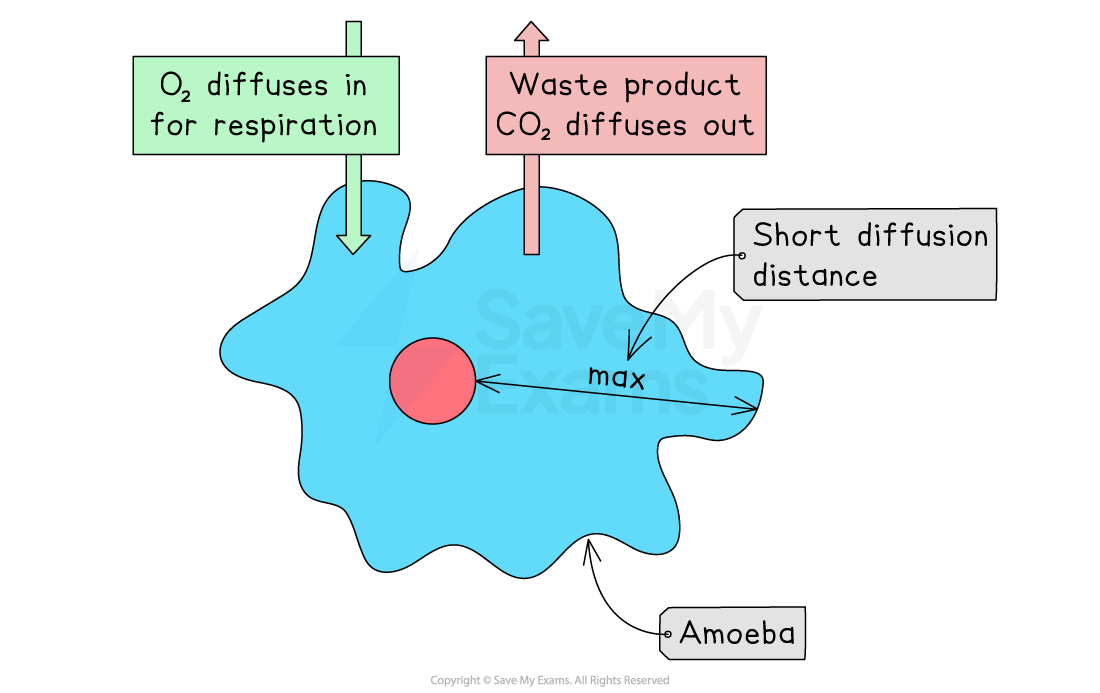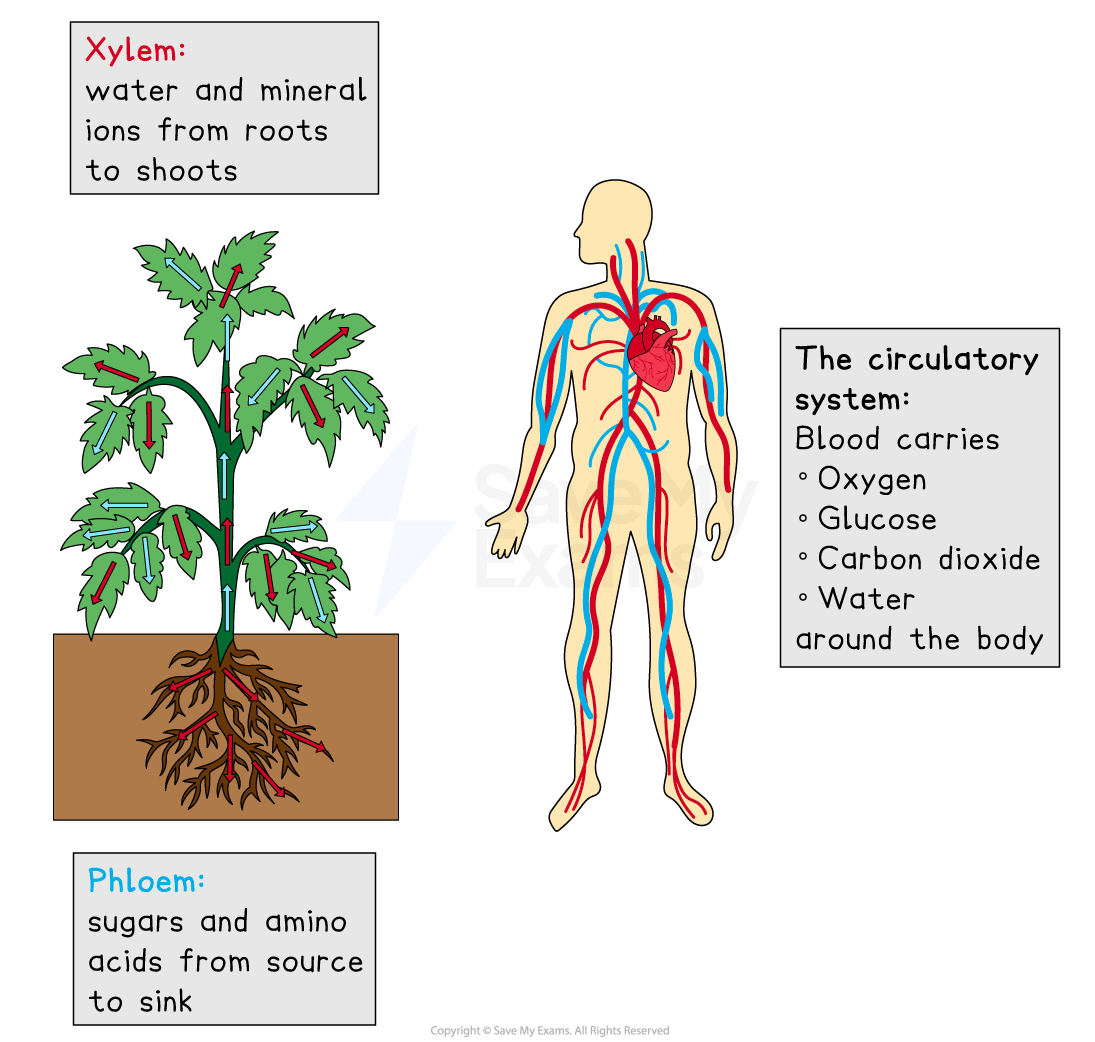The Need for a Transport System (Edexcel IGCSE Science (Double Award)): Revision Note
Exam code: 4SD0
Unicellular Organisms
To function properly, organisms must exchange substances, like food molecules and waste, with their environment
This exchange happens via diffusion, osmosis, and active transport across the cell membrane
Unicellular organisms, like amoebas, have large surface areas relative to their volume, meaning the distance from the surface of the cell to the centre is small
Consequently, they don't need specialised exchange surfaces or transport systems, as diffusion, osmosis, and active transport through the cell membrane are sufficient for their needs

Unicellular organisms such as amoeba do not require transport systems due to their large surface area to volume ratio
Multicellular Organisms
Multicellular organisms, like humans, have bodies composed of many cells
These organisms have multiple cell layers, making the distance from the surface to the centre too long for diffusion alone
Diffusion to all cells would be too slow to meet the organism's needs, so larger organisms require transport systems
In animals, the circulatory system carries essential substances in the blood
Eg. oxygen, glucose, carbon dioxide, water and urea
In plants, the vascular system transports substances:
the xylem moves water and minerals from roots to shoots
the phloem distributes sugars and amino acids throughout the plant.

Humans and some plants have specialised transport systems

Unlock more, it's free!
Did this page help you?